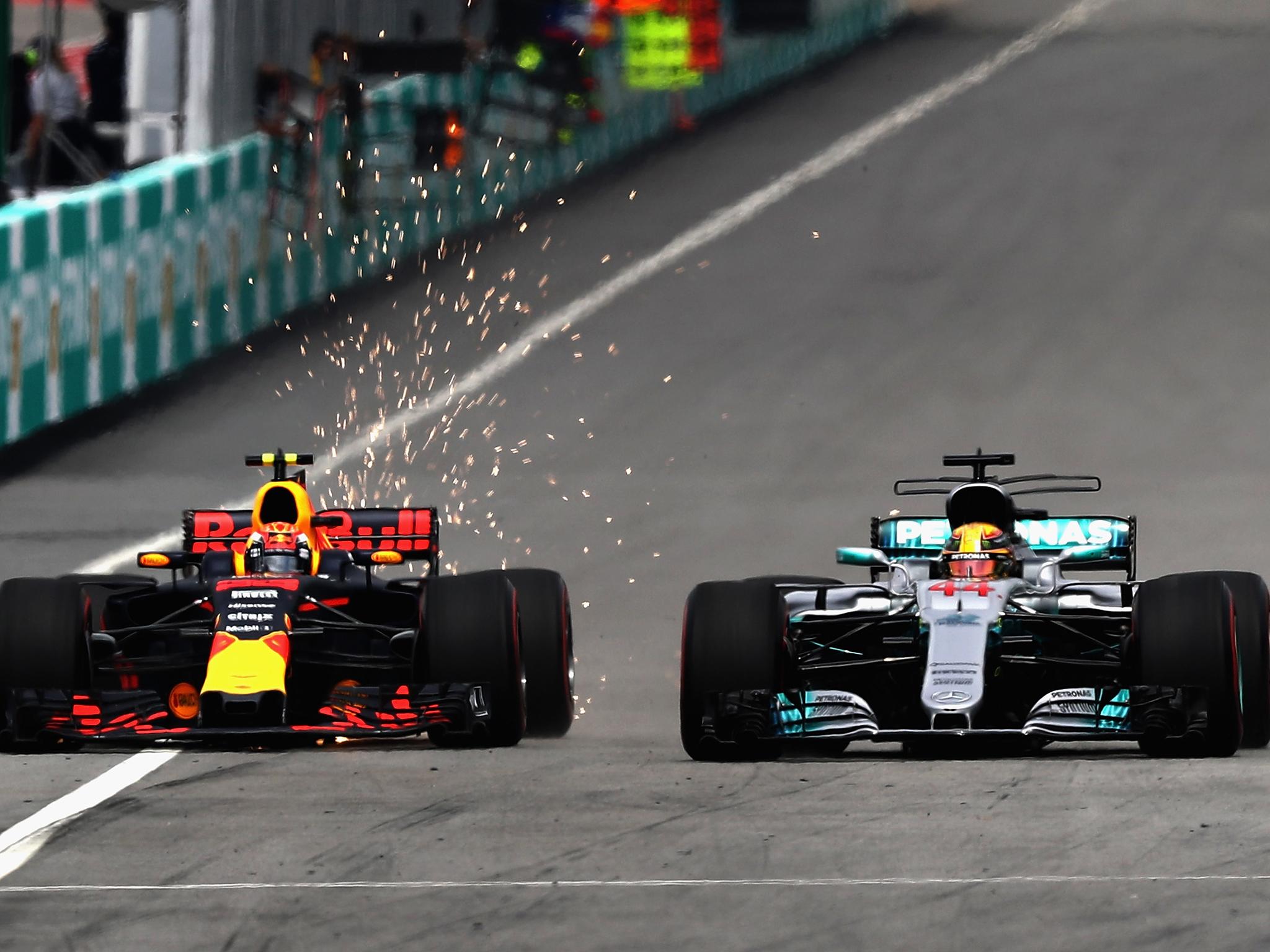Malaysian Grand Prix goes out with a bang as Max Verstappen claims shock victory, but why does it need to go at all?
Sepang held its 18th and final grand prix, but it is one of few tracks left on the calendar that encourages overtaking and can attract fans to an entertaining sport

“Thank you to the fans here in Malaysia, I'll miss racing at this great circuit,” Lewis Hamilton said after finishing second in his 11th Malaysian Grand Prix, the one that looks set to go down in history as the last. That’s because from 2018, Sepang drops off the Formula One calendar due to poor interest and rising costs, and in Max Verstappen’s victory on Sunday, it certainly went out with a bang.
But why is it going out at all? In its 18-year history among the F1 circus, Sepang has never been short on drama, and as modern race tracks go it is one of the more exciting given its vast width and overtaking opportunities. If anything sums up why Malaysia has proven such a fan favourite for those watching abroad, it’s in the fact that this was one of few grand prix this season decided by an on-track overtake. Who’d have thought?
And what an overtake it was. The sight of a Red Bull darting down the inside of a Mercedes – not just any Mercedes but that of world champion-elect Lewis Hamilton – is not a common one these days, yet Verstappen showed whatever experience he has in his 20 years to spot that the Siler Arrow was struggling for traction and dive up the inside of turn one to snatch a lead that he would not relinquish.
Malaysian Grand Prix in pictures
Show all 25Behind Verstappen, there was action aplenty, as Sebastian Vettel charged through the field from last to fourth and the midfield pack jostled for position until the very last lap. Heck, even the chequered flag didn’t end the drama, as Vettel and the Williams of Lance Stroll collided, wrecking the former’s Ferrari while leaving him facing a five-place grid penalty in Japan if he needs to change his gearbox. How’s your luck, Seb?
But behind all of this is a track that has not been tinkered with since it arrived on the scene bar one or two modifications in lengthening or sharpening corners, and it’ll be a true shame to lose such a venue when other circuits remain on the calendar that cannot produce the same level of overtaking in one Malaysian Grand Prix in a decade’s worth of races.
This is F1 though, and money talks – or more so the lack of it in this case. After 18 years of funding, the Malaysian government is no longer willing to bankroll the event. Sepang was the first of the Herman Tilke generation, the series of tracks built by the German designer in agreement with Bernie Ecclestone, who capitalised on attracting government funding to help turn these remote locations into sponsorship paradises.
Without the money – and it must be said, the local fans – the Malaysian Grand Prix just doesn’t make sense, at least not on a financial basis. But much like Silverstone, and Monza and Spa-Franchorchamps, if the circuit produces the type of exhilarating action that will attract fans to the sport, Liberty Sport should do more to keep it on the calendar. It’s all good and well taking the sport to the people in the form of city circuits, but more often than not the racing can prove dull, processional and a touch on the easy side for the world’s best drivers.
What the city centres can’t offer is flowing corners like the turn five-six curves in Sepang, or the challenging turn-12-13-14 combination that requires drivers to brake while steering right – not something that’s advised in any car, let alone an F1.
Then there’s always the weather in Malaysia, which has the potential to cause chaos if one of its notorious thunderstorms strikes at the wrong time, while the temperature is also a real challenge for drivers due to the excessive heat they experience during a race. Drivers should winch themselves out of the cockpit looking the picture of exhaustion, as if they’ve just been through a real challenge, but too often they remove their helmets and flick their hair back into place, not a bead of sweat to be seen.
Unfortunately, the show must go on without Malaysia, and typically the next race is in just one week’s time in Japan. The circus moves on, but Sepang won’t be forgotten quickly, and with a purpose-built race track remaining in the country to host the likes of MotoGP and Asia-based championships, who knows what the future holds.
Subscribe to Independent Premium to bookmark this article
Want to bookmark your favourite articles and stories to read or reference later? Start your Independent Premium subscription today.

Join our commenting forum
Join thought-provoking conversations, follow other Independent readers and see their replies